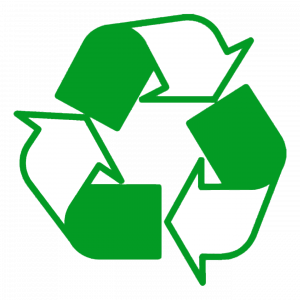We all know what Green Buildings are, right? There are various permutations but generally, to be green, the structure is designed, built, maintained and sustained in an environmentally responsible and resource-efficient manner. The end-all objective is to reduce impact of the built package and system on both the environment and mankind by
- Using energy, water, and other resources efficiently
- Protecting occupant health
- Improving employee productivity
- Reducing pollution and waste
As a LEED AP-certified professional who specializes in Indoor Environmental issues with a focus on fire and life safety, I was very interested in recent articles that are creating awareness of some critical health and safety problems inherent to the green building movement that 1) use innovative, locally-produced products, and 2) implement new design, construction, and operation approaches intended to reduce energy usage and be environmentally sound.
Green Building Fire Safety
In Megan Grennilles recent EHSWire article about the seminal Triangle Fire, it noted that building and fire code rules caught up with the high rise construction only after the tragedy of 146 worker deaths highlighted the challenges of safety and rescue in the case of a fire. The same situation recently occurred in Bakersfield where a green-constructed Target store highlighted some new concerns for health and safety for emergency responders:
The fire at the Bakersfield Target started, firefighters learned, at the photovoltaic array [solar] on the building's roof. Even after the firefighters disconnected the electrical mains, they discovered that the solar panels were still energized, presenting a safety challenge in addition to the fire.
This brings to light how the integration of green building practices on a seemingly typical commercial building can present new hazards that must be identified to protect building occupants and emergency responders. Fire fighters responding to an alarm may cut electrical power from the supply grid, but what is the procedure if there is an active solar array or an integrated wind turbine generating power as a part of the building? Other new electrical and fire hazards facing unprepared emergency responders include the unknown level of fire resistance of recycled/green building materials, how to control fire spread on green vegetative roofs, and how to control smoke in wide, open atrium areas.
owners of green buildings might have to be aware that the green designs can present previously unconsidered challenges that arise as a direct result of construction choices. ...Because codes even a decade after green design concepts hit the mainstream still largely deal with traditional building designs and materials, facility managers have to know how to address the intersection of green design and current codes.
The bottom line is that "green concepts should be reviewed as part of a fire-protection and life-safety analysis, because buildings, green or not, must meet building and fire code standards to protect the health and safety of both the occupants and emergency responders.
Moisture and Mold Management in Green Buildings
Another potential hazard of green buildings is the management of moisture within the building and how selection of a green design and materials may be inappropriate if the location and weather are not considered: the design-and-construction community must not assume that if one builds green, then one will be building regionally correct or even lower risk buildings.
A recent article, Hidden Risks of Green Buildings, was written from an insurance underwriters perspective and centered on the management of moisture. The article mentioned the trend of using carbohydrate-based building products instead of petroleum-based building products. That is where my eyes widened! Any indoor quality consultant knows the formula: moisture + food source = perfect habitat for mold growth. Carbohydrate-based building products are food for mold!
Moisture comes from many sources in a building: bulk water from a rook, window, or facade leak; water pipe break; HVAC condensate overflow; condensation on cold surfaces; or vapor (relative humidity) in the air. Additional humidity can be added to the air by introducing humid outdoor air that has not been properly dehumidified or from other sources such as showers, locker rooms, steam rooms, gyms, kitchen facilities, human respiration (particularly if more people are occupying the space than the original design). ( More information on these moisture-related potential problems including the risk of LEED flush-outs can be found here.)
Moisture meeting carbohydrate-based building materials over time certainly does look like the potential beginning of The Perfect Storm, because, in reality, carbohydrate-based building materials, even treated with the best biocide, would only be mold resistant not mold proof. Given food, water, and time mold will grow. So as a professional IEQ consultant who has seen it all when it comes to mold contamination, I sincerely believe the articles foreshadowing that the design community would be advised to prioritize the lessons already learned from the waterproofing, humidity control, and building forensics community. When using potential mold food within a building, moisture control is ever more critical to the air quality of the building as well as the building materials life cycle.
Are you interested in green construction? Have you thought of the potential hazards that can be created when using new technologies, new materials and tightening up the envelope?









